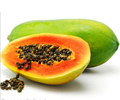Discover how fruits and vegetables enhance health with essential nutrients and how new breeding techniques boost their benefits.
- Rich in essential vitamins, minerals, and fiber for overall health
- Antioxidants in these foods combat oxidative stress and chronic diseases
- Advances in breeding and identification enhance nutritional profiles
Fruit and Vegetable Intake: Benefits and Progress of Nutrition Education Interventions- Narrative Review Article
Go to source).
Fruits and vegetables are packed with antioxidants that help fight chronic diseases! #nutrition #medindia #antioxidants’
Chemical and Nutritional Composition of Fruits and Vegetables
1. Vitamins and MineralsFruits and vegetables are rich sources of essential vitamins and minerals. Vitamins such as A, C, and E, along with minerals like potassium and magnesium, play pivotal roles in maintaining health. For instance, vitamin C is crucial for immune function and skin health, while potassium helps regulate blood pressure.
2. Dietary Fiber
Dietary fiber is a significant component of fruits and vegetables, contributing to digestive health and aiding in weight management. Fiber helps maintain healthy bowel function, reduces the risk of colorectal cancer, and assists in controlling blood sugar levels.
Antioxidants, including vitamins and carotenoids, are compounds that neutralize harmful free radicals in the body. Free radicals are unstable molecules that can cause oxidative stress and damage cells, leading to chronic diseases. Key antioxidants found in fruits and vegetables include:
Vitamin C: Found in citrus fruits, strawberries, and bell peppers.
Carotenoids: Present in carrots, sweet potatoes, and leafy greens. They include beta-carotene, lutein, and zeaxanthin.
Flavonoids: Present in apples, onions, and berries. They contribute to reducing inflammation and protecting against cardiovascular diseases.
Health Benefits of Fruits and Vegetables
1. Cardiovascular HealthDiets rich in fruits and vegetables have been linked to lower blood pressure and a reduced risk of heart disease and stroke. The potassium in these foods helps balance sodium levels and supports healthy blood vessel function. Antioxidants also play a role in reducing oxidative damage to the cardiovascular system.
2. Cancer Prevention
Certain fruits and vegetables contain compounds with anticancer properties. For example, cruciferous vegetables like broccoli and Brussels sprouts contain glucosinolates, which may help prevent cancer by detoxifying carcinogens and inhibiting tumor growth.
3. Eye Health
Fruits and vegetables rich in vitamins A, C, and E, as well as carotenoids like lutein and zeaxanthin, are beneficial for eye health. These nutrients help protect against age-related macular degeneration and cataracts.
4. Digestive Health
Fiber-rich fruits and vegetables support healthy digestion by promoting regular bowel movements and preventing constipation. Additionally, dietary fiber can help maintain a healthy gut microbiome, which is essential for overall health.
Advancements in Breeding of Fruits and Vegetables
Recent breeding programs have focused on developing new varieties of fruits and vegetables with enhanced nutritional profiles. These programs aim to increase the content of beneficial compounds while improving taste, texture, and yield (2✔ ✔Trusted SourceUnderutilized legumes: nutrient status and advanced breeding approaches for qualitative and quantitative enhancement
Go to source).
1. Enhanced Nutritional Profiles
Advancements in plant breeding techniques have led to the creation of fruits and vegetables with higher concentrations of essential nutrients. For example, biofortified crops with increased levels of vitamins and minerals are being developed to address specific nutritional deficiencies.
2. Advanced Identification Techniques
New technologies, such as high-throughput screening and molecular markers, are being used to identify and select fruits and vegetables with superior nutritional properties. These techniques enable researchers to better understand the genetic basis of nutrient content and develop crops with optimized health benefits.
The chemical and nutritional profiles of fruits, vegetables, and their co-products play a significant role in promoting human health and longevity. By providing essential vitamins, minerals, fiber, and antioxidants, these foods contribute to the prevention of chronic diseases and the maintenance of overall well-being.
Advances in breeding and identification techniques continue to enhance the nutritional value of these foods, offering promising prospects for improved public health. The ongoing research and development in this field underscore the importance of incorporating a diverse range of fruits and vegetables into our diets for optimal health benefits.
References:
- Fruit and Vegetable Intake: Benefits and Progress of Nutrition Education Interventions- Narrative Review Article - (https://www.ncbi.nlm.nih.gov/pmc/articles/PMC4644575/)
- Underutilized legumes: nutrient status and advanced breeding approaches for qualitative and quantitative enhancement - (https://www.ncbi.nlm.nih.gov/pmc/articles/PMC10232757/)
Source-Medindia
















